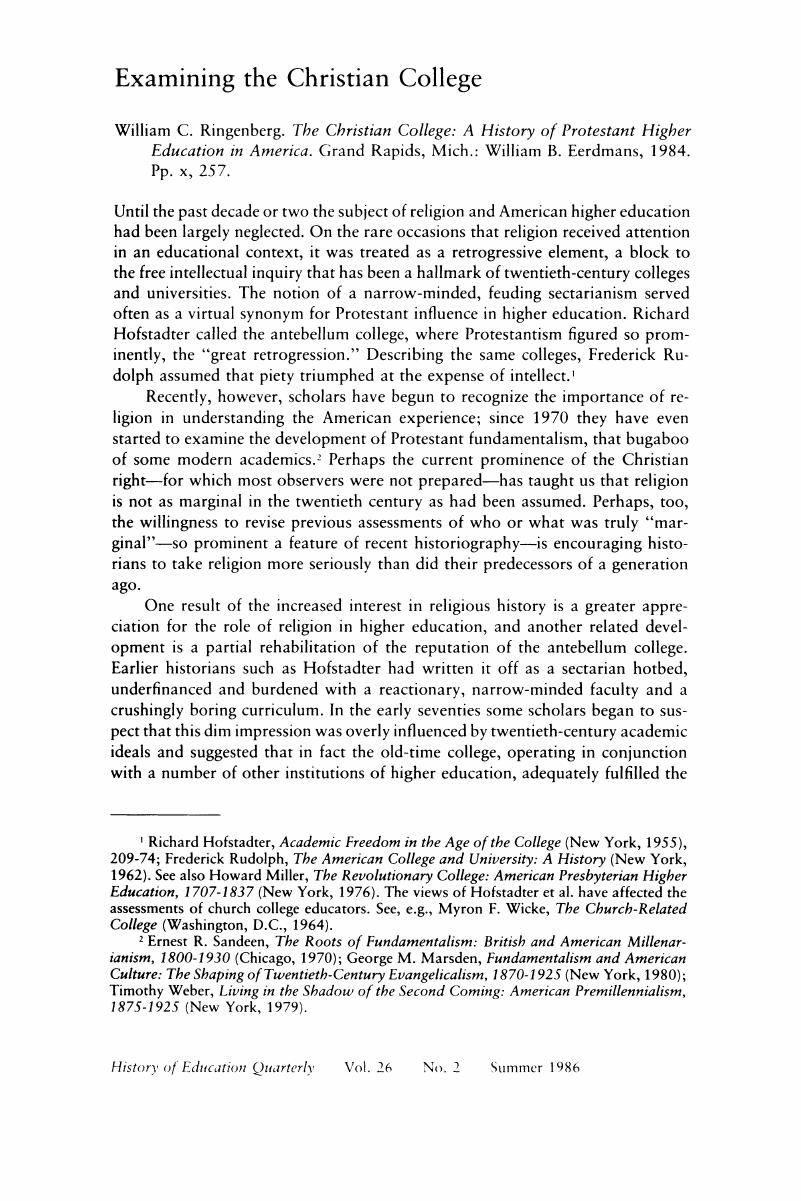No CrossRef data available.
Published online by Cambridge University Press: 24 February 2017

1 Hofstadter, Richard, Academic Freedom in the Age of the College (New York, 1955), 209–74; Rudolph, Frederick, The American College and University: A History (New York, 1962). See also Miller, Howard, The Revolutionary College: American Presbyterian Higher Education, 1707–1837 (New York, 1976). The views of Hofstadter et al. have affected the assessments of church college educators. See, e.g., Wicke, Myron F., The Church-Related College (Washington, D.C., 1964).Google Scholar
2 Sandeen, Ernest R., The Roots of Fundamentalism: British and American Millenarianism, 1800–1930 (Chicago, 1970); Marsden, George M., Fundamentalism and American Culture: The Shaping of Twentieth-Century Evangelicalism, 1870–1925 (New York, 1980); Weber, Timothy, Living in the Shadow of the Second Coming: American Premillennialism, 1875–1925 (New York, 1979).Google Scholar
3 Sloan, Douglas, “Harmony, Chaos, and Consensus: The American College Curriculum,” Teachers College Record 73 (Dec. 1971): 221–51; McLachlan, James, “The American College in the Nineteenth Century: Toward a Reappraisal,” Teachers College Record 80 (Dec. 1978): 287–306; Allmendinger, David Jr., Paupers and Scholars: The Transformation of Student Life in Nineteenth-Century New England (New York, 1975); Burke, Colin B., American Collegiate Populations: A Test of the Traditional View (New York, 1982).Google Scholar
4 Potts, David B., “American Colleges in the Nineteenth Century: From Localism to Denominationalism,” History of Education Quarterly 11 (Winter 1971): 363–80.Google Scholar
5 This should soon be rectified; Lilly Endowment, Inc., is sponsoring histories of Protestant, Catholic, and black theological education.Google Scholar
6 See my unpublished dissertation, “Protestant Fundamentalist Bible Schools, 1882–1940” (Columbia University, 1981).Google Scholar